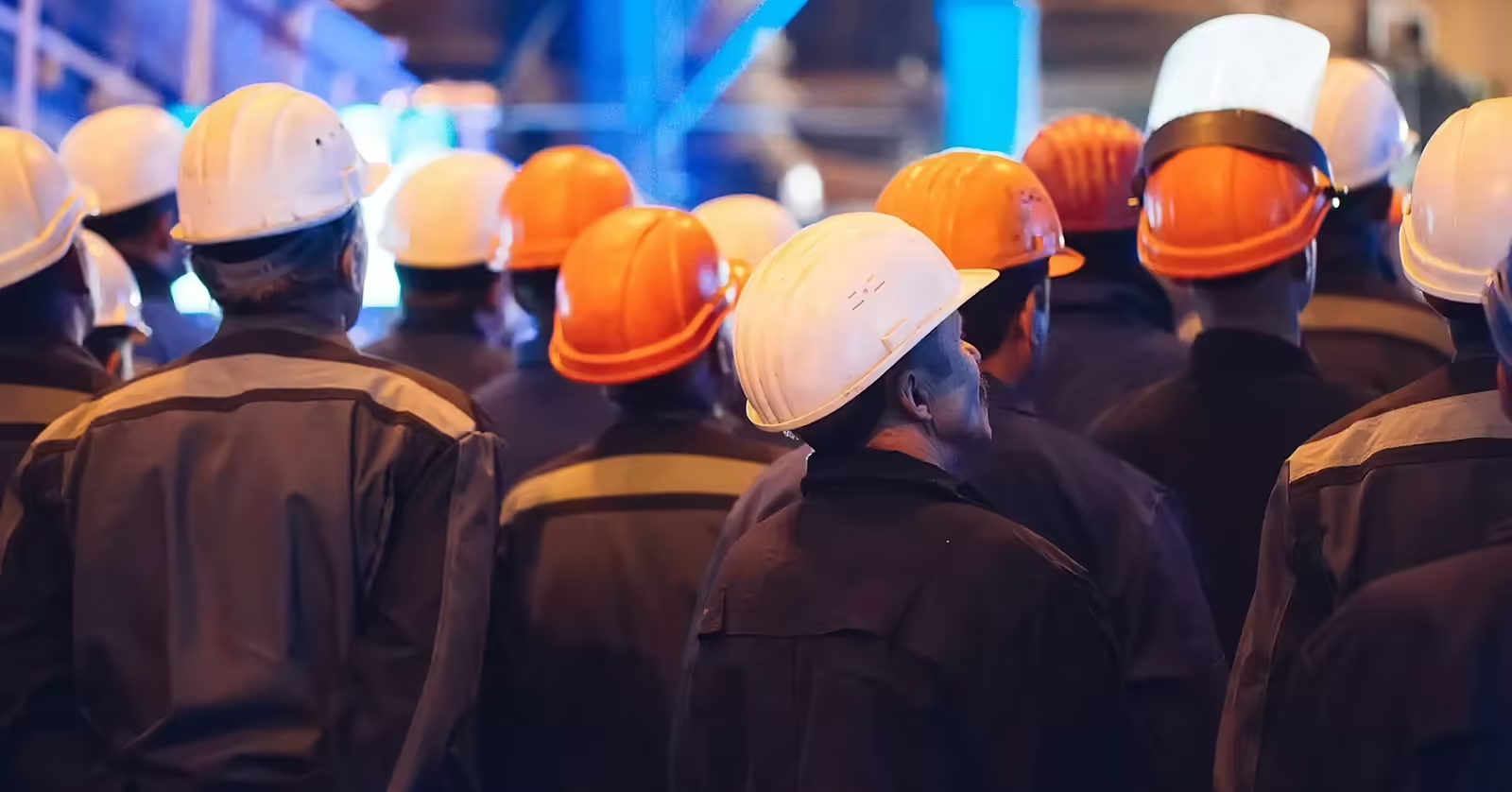What Federal Regulations Protect High-risk Workers?
May 31, 2023

To ensure their safety and well-being, the implementation of safeguards for high-risk workers is essential. These protections not only safeguard the human rights of these individuals but also contribute to a more productive workforce by minimizing work-related accidents and fatalities.
By understanding these protections available to high-risk workers, you can better advocate for your own safety or that of your colleagues while navigating potentially hazardous employment situations.
Protecting High-Risk Workers: Federal Regulations
High-risk workers need specific federal protections to stay safe on the job, especially in industries like construction, manufacturing, agriculture, maritime operations, and oil rig work.
Examples of High-Risk Occupations
- Construction workers
- Manufacturing employees
- Agriculture laborers
- Maritime professionals (including seamen)
- Oil rig operators: working in hazardous environments where human rights are often compromised due to a lack of regulatory oversight.
Dangers Faced by High-Risk Workers
High-risk workers face various dangers, including exposure to toxic substances, falls from heights, heavy machinery accidents, and explosions or fires:
- Inadequate training: Employers may not provide proper training or education about safe practices.
- Poorly maintained equipment: Companies might neglect routine maintenance tasks that could prevent catastrophic failures.
- Insufficient safety measures: Workplaces may lack essential protective equipment or fail to enforce necessary precautions.
To combat these dangers, federal agencies like the Occupational Safety and Health Administration (OSHA), the National Institute for Occupational Safety & Health (NIOSH), and the Mine Safety & Health Administration (MSHA) work tirelessly to establish guidelines that protect workers’ rights while promoting a safer working environment.
The Vital Role of OSHA in Workplace Safety
OSHA, created by the Occupational Safety and Health Act, works to secure vulnerable employees and prevent serious harm or fatalities by establishing and enforcing workplace safety regulations.
How OSHA Sets Safety Standards
OSHA sets safety standards based on research, industry best practices, and input from stakeholders, and updates them regularly through public participation.
Enforcement Measures Taken by OSHA
- Inspections: OSHA conducts inspections nationwide to assess compliance with regulations and identify areas for improvement.
- Citations: OSHA issues citations with proposed penalties and deadlines for correcting violations.
- Training and Education: OSHA offers resources to help employers understand their responsibilities and develop effective safety plans.
OSHA also upholds human rights and peoples’ rights as recognized by the Supreme Court by encouraging workers’ participation in ensuring workplace safety and providing them with the right to file complaints about unsafe conditions without fear of retaliation.
The Vital Role of NIOSH in Worker Health & Safety Research
NIOSH is a federal agency that conducts research on best practices aimed at reducing occupational injuries or illnesses.
Its function remains vital because it helps inform policymakers about effective strategies they should implement across different sectors.
Key Areas of NIOSH Research
- Ergonomics: NIOSH aims to improve workplace design and minimize risks associated with ergonomic hazards.
- Hazardous Substances: NIOSH develops guidelines for controlling exposure to hazardous substances in various industries.
- Injury Prevention: This area of research aims to identify risk factors and develop prevention strategies specifically tailored towards high-risk occupations.
- PPE (Personal Protective Equipment): Evaluating the effectiveness of PPE used by workers in various settings is essential for ensuring adequate protection against potential hazards.
Collaboration Between NIOSH And OSHA
NIOSH researchers and OSHA regulators collaborate to ensure that workplace safety standards are based on sound scientific evidence.
This partnership involves sharing data related to injury trends among specific populations and developing joint initiatives to address emerging safety concerns.
NIOSH also provides technical assistance in support of OSHA rulemaking efforts.
Ultimately, this collaborative approach ensures that both agencies are working towards a common goal: protecting the health and safety of all workers across industries while upholding their human rights and people’s rights as mandated by the Supreme Court.
Jones Act Protection for Maritime Workers
Maritime workers deserve protection, and the Jones Act provides just that for those who work on sea-faring vessels.
The eligibility criteria for protection under the Jones Act include being classified as a “seaman”, working on a vessel in navigation, and suffering an injury due to employer negligence.
- Status: To qualify, the worker must be classified as a “seaman.”
- Vessel in Navigation: The term “vessel in navigation” refers to any watercraft capable of being used for transportation on water.
- Negligence: The injury must result from the negligence of the employer, co-workers, or other parties involved with the operation and maintenance of the vessel.
Compensation options for injured maritime workers include maintenance and cure, past and future wage loss, pain and suffering, and punitive damages in cases of egregious employer negligence or human rights violations.
- Maintenance and Cure: This covers daily living expenses and medical care until maximum recovery is achieved.
- Past & Future Wage Loss: Seamen may recover lost wages due to their injuries, as well as any future wage loss.
- Pain & Suffering: Injured workers can seek compensation for physical pain and emotional distress caused by the accident and resulting injuries.
- Punitive Damages: Courts might award punitive damages designed to punish the wrongdoer and deter similar behavior in the future.
Maritime law is complex, so it’s crucial for injured seamen to consult with knowledgeable attorneys who specialize in this area, especially in cases involving human rights violations.
MSHA’s Impact on Mining Industry Safety
The Mine Safety & Health Administration (MSHA) upholds human rights by establishing safety standards in the mining industry to protect workers from hazardous conditions.
MSHA’s Role in Setting Workplace Safety Standards
MSHA develops and implements comprehensive safety standards based on research findings and best practices to create safer working environments for miners.
Enforcement Measures Taken by MSHA
- Fines: Fines can range from $100 – $250k per incident for violations of safety standards.
- Increased Inspections: Mines with a history of repeated violations or those that pose significant risks to worker safety may be subject to more frequent inspections by MSHA officials.
MSHA’s efforts have significantly improved mining industry safety standards over time while protecting people’s rights and well-being within this high-risk sector.
FMCSA’s Role in Trucking Industry Safety Standards
The FMCSA strives to promote safety in trucking operations by implementing regulations for driver qualifications, vehicle maintenance, and hours of service compliance.
By implementing strict guidelines for driver qualifications, vehicle maintenance, and hours of service compliance, this agency aims to enhance road safety for all users.
Key Areas of Focus for FMCSA
- Driver Qualifications: FMCSA sets standards for minimum requirements that drivers must meet before operating a commercial motor vehicle.
- Vehicle Maintenance: Ensuring proper upkeep of trucks is crucial in preventing mechanical failures that could lead to accidents on the road.
- Hours of Service Compliance: To prevent fatigue-related crashes, FMCSA establishes rules governing how long drivers can work without taking breaks or resting periods.
Common Violations Enforced by FMCSA
FMCSA actively monitors carriers’ compliance with established rules through audits, roadside inspections, and investigations into reported violations.
- Failing drug tests or not having a required CDL endorsement.
It’s important to note that the FMCSA’s efforts contribute to protecting not only the truck drivers but also other motorists and pedestrians who share the road.
Federal Whistleblower Protections for High-Risk Workers
Protecting workers who report safety violations is crucial for promoting safer working environments.
Types of Whistleblower Protection Laws
Whistleblower protection laws safeguard the rights of individuals and groups in the workplace.
- The Occupational Safety and Health Act (OSHA): Protects workers who report OSHA violations from employer retaliation.
- The Surface Transportation Assistance Act (STAA): Safeguards transportation industry employees who refuse to violate safety regulations or report violations.
- The Mine Safety and Health Act (MSHA): Protects mining industry whistleblowers who disclose hazardous conditions at their worksites.
- The Seaman’s Protection Act: Shields maritime workers reporting unsafe practices aboard vessels from retribution by employers.
Reporting Process and Legal Recourse
Workers should report safety concerns internally, but if retaliation occurs, they can file a complaint with OSHA or other relevant federal agencies.
Whistleblowers who face retaliation are entitled to remedies such as reinstatement of employment, back pay with interest, and compensation for incurred damages.
For success in these claims, it is crucial for injured workers to consult experienced attorneys specializing in whistleblower protection laws, like those at Morrow & Sheppard LLP.
Protecting high-risk workers is crucial for their safety and well-being at work, and federal agencies like OSHA, NIOSH, and FMCSA have established guidelines and regulations to prevent accidents and injuries. The Jones Act compensates sea-faring vessel workers, while MSHA regulates safety standards in the mining industry, and federal whistleblower protections encourage reporting of violations to improve worker protection overall.
Daniel Sheppard is licensed to practice personal injury law in Texas and Louisiana. Daniel takes pride in providing exceptional service to clients who were seriously hurt on the job and brings his relentless work ethic into the office and the courtroom. Learn more about Daniel.
- Home
- |
- Trucking Accidents
- |
- What Federal Regulations Protect High-risk...
















































